"Srinagar is truly magical! From the serene Dal Lake to the vibrant Mughal Gardens, the city offers a perfect blend of nature, history, and culture. We stayed on a beautiful houseboat, and the experience was unforgettable. Waking up to the view of the mountains and watching the sunrise over the lake was something out of a dream. Highly recommend visiting Srinagar for a peaceful yet immersive experience."
- Home
- About Us
- International
- Africa
- America
- Asia
- Australia & New Zealand
- Europe
- Middle East
AfricaEgypt
Mauritius
Zimbabve
AmericaAsiaAustralia & New ZealandEuropeCentral and Eastern Europe
Highlights
Mediterranean Europe
Middle East - Domestic
- North India
- South India
- East and North East
- Rajasthan, West and Central
North IndiaDelhi
Himachal Pradesh
Uttarakhand
Amritsar
Chandigarh
Punjab & Haryana
Uttar Pradesh
South IndiaAndaman and Nicobar Islands
Kerela
Andhra Pradesh
Tamil Nadu
East and North EastAssam
Nagaland
Tripura
Meghalaya
Rajasthan, West and Central - Temple Darshan
- Group Booking
- Blogs
- Contact Us
Sights

Explore Sri Nagar
The Chardham Yatra is one of the most important pilgrimage journeys in India, dedicated to the worship of Hindu deities. It involves visiting four sacred shrines located in the Indian state of Uttarakhand, in the Himalayan region. The Chardham Yatra is considered a spiritual journey, and it is believed that visiting these four temples can bring salvation and remove the cycle of birth and death (moksha).
Places You'll See
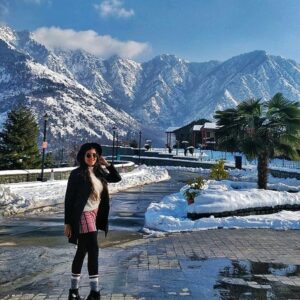
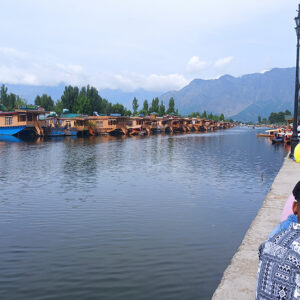
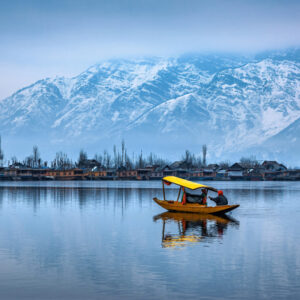
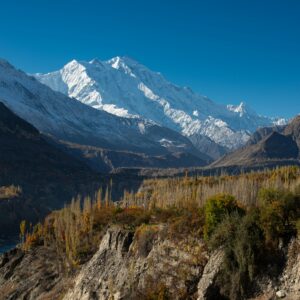

Tour Highlights
- Well planned Tour itinerary.
- Kitchen as per our own convenience.
- Best hotels through out the tour.
- Unique tour of Scenic Beauty
- Stay in destinations that have proper facilities like hospitals, Market.
- Our groups are scheduled back to back, which is very helpful.
Tour Itinerary
Sri Nagar
Days Plan
- Morning: Arrive at Srinagar Airport and take a scenic drive to Sonmarg (approx. 80 km, 2-3 hours). Enjoy the beautiful landscapes along the way.
- Afternoon: Check-in to your hotel or guesthouse in Sonmarg.
- Evening: Relax and take a stroll around Sonmarg Valley. Enjoy the tranquil atmosphere and the views of the Sindh River and surrounding snow-capped peaks.
- Overnight: Stay in Sonmarg.
- Morning: After breakfast, take a trek or pony ride to Thajiwas Glacier, located around 3-4 km from Sonmarg. The trek offers stunning views of the surrounding mountains and glaciers.
- Afternoon: Spend time exploring the glacier, enjoy the snow (if visiting during winter), or relax by the Thajiwas Lake.
- Evening: Return to Sonmarg and relax. Enjoy a warm meal at a local eatery.
- Overnight: Stay in Sonmarg.
- Morning: After breakfast, begin a day trip to Vishansar Lake, located around 12 km from Sonmarg. You can either trek or take a short drive and then hike to the lake.
- Afternoon: Spend time by the serene Vishansar Lake, taking in the clear waters, stunning snow-capped mountains, and peaceful surroundings. You can opt for a short trek around the lake for better views.
- Evening: Return to Sonmarg by evening.
- Overnight: Stay in Sonmarg.
- Morning: After breakfast, head out for a short trek to Meadow of Gold or Kundsar Lake. These meadows are perfect for nature walks and offer panoramic views of Sonmarg’s mountains and valleys.
- Afternoon: Engage in adventure activities like fishing in the Sindh River or take a short rafting trip (seasonal).
- Evening: Explore the local market in Sonmarg for Kashmiri handicrafts and souvenirs.
- Overnight: Stay in Sonmarg.
The best time to visit Srinagar largely depends on the kind of experience you're seeking, as the city offers distinct beauty in every season. Here's a breakdown of the ideal times to visit:
1. Summer (March to June):
- Best for: Pleasant weather, sightseeing, and outdoor activities.
- Weather: Temperatures range from 15°C to 30°C. It’s cool and comfortable, perfect for exploring the city's gardens, lakes, and historic sites.
- Activities: Visit the famous Mughal Gardens (Shalimar Bagh, Nishat Bagh), Dal Lake for a Shikara ride, and explore attractions like Hazratbal Shrine and the Old City.
- Why visit: Summer is the peak tourist season due to the pleasant weather, blooming flowers, and lush landscapes. It's perfect for a relaxing trip and sightseeing.
2. Autumn (September to November):
- Best for: Autumn foliage, fewer tourists, and mild weather.
- Weather: Temperatures range from 10°C to 20°C, with crisp air and clear skies.
- Activities: Enjoy the vibrant autumn colors around Dal Lake, explore the gardens, and indulge in peaceful walks through the Kashmir Valley. It’s also a great time for photography.
- Why visit: The beauty of the fall foliage and the calm atmosphere with fewer crowds makes autumn a delightful time to visit Srinagar. The apple orchards are also in full bloom during this time.
3. Winter (December to February):
- Best for: Snow activities, winter sports, and experiencing Kashmir's winter wonderland.
- Weather: Temperatures can drop as low as -2°C to 5°C, with heavy snowfall.
- Activities: For snow lovers, this is the best time to visit. You can enjoy activities like skiing, snowboarding, and snow trekking. The Dal Lake may freeze, creating a beautiful winter landscape.
- Why visit: Winter is perfect for those who want to experience a snow-covered Srinagar, with less crowded tourist spots. The houseboats on Dal Lake offer a magical experience during this season.
4. Spring (March to Early April):
- Best for: Early blooms and mild weather.
- Weather: Temperatures range from 5°C to 15°C.
- Activities: You can witness the cherry blossoms and tulips beginning to bloom, especially in the Tulip Garden (which opens in April). The weather is perfect for strolling around the lakes and gardens.
- Why visit: Spring is a great time for those who want to see the transition from winter to summer and enjoy peaceful walks in a less crowded atmosphere.
Notes:
• 2 passport size photos
• Adult – Original + photocopy of any of the ID proof i.e. Aadhar Card / Driving Licence / Voters ID / Passport
• Child – Original + photocopy of any of the ID proof i.e. Aadhar Card / School ID / Passport
• Infant – Aadhar Card / Birth certificate
• NRI / Foreign nationals – Mandatory Passport + Valid Indian visa / OCI card / PIO card
• Above mentioned ID proof is mandatory at the time of booking and carry the same ID proof on tour as well
Sri Nagar
Tour Details
Hear from Our
Happy Travelers
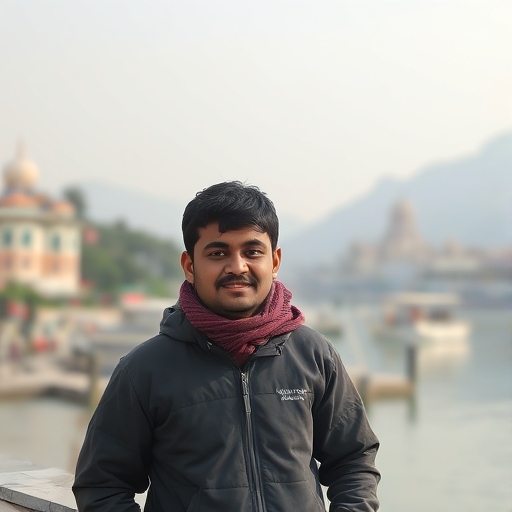
"I visited Srinagar with my family and had the best time. The weather in summer was perfect, and we explored the Shalimar Bagh, Nishat Bagh, and Hazratbal Shrine. But the most memorable part was our Shikara ride on Dal Lake. It felt surreal to be on the water surrounded by snow-capped peaks. Srinagar is a peaceful destination with a rich cultural heritage, and we enjoyed every moment of it!"

"Srinagar left us in awe! The scenic beauty of the city is beyond words—Dal Lake, the majestic Zabarwan Range, and the lush Meadows of Gulmarg. We spent a relaxing day on a houseboat and then explored the local markets for handicrafts. The locals were warm and welcoming, making our trip even more memorable. If you love nature and culture, Srinagar should definitely be on your travel list."

The best time to visit Srinagar largely depends on the kind of experience you’re seeking, as the city offers distinct beauty in every season. Here’s a breakdown of the ideal times to visit:
1. Summer (March to June):
- Best for: Pleasant weather, sightseeing, and outdoor activities.
- Weather: Temperatures range from 15°C to 30°C. It’s cool and comfortable, perfect for exploring the city’s gardens, lakes, and historic sites.
- Activities: Visit the famous Mughal Gardens (Shalimar Bagh, Nishat Bagh), Dal Lake for a Shikara ride, and explore attractions like Hazratbal Shrine and the Old City.
- Why visit: Summer is the peak tourist season due to the pleasant weather, blooming flowers, and lush landscapes. It’s perfect for a relaxing trip and sightseeing.
2. Autumn (September to November):
- Best for: Autumn foliage, fewer tourists, and mild weather.
- Weather: Temperatures range from 10°C to 20°C, with crisp air and clear skies.
- Activities: Enjoy the vibrant autumn colors around Dal Lake, explore the gardens, and indulge in peaceful walks through the Kashmir Valley. It’s also a great time for photography.
- Why visit: The beauty of the fall foliage and the calm atmosphere with fewer crowds makes autumn a delightful time to visit Srinagar. The apple orchards are also in full bloom during this time.
3. Winter (December to February):
- Best for: Snow activities, winter sports, and experiencing Kashmir’s winter wonderland.
- Weather: Temperatures can drop as low as -2°C to 5°C, with heavy snowfall.
- Activities: For snow lovers, this is the best time to visit. You can enjoy activities like skiing, snowboarding, and snow trekking. The Dal Lake may freeze, creating a beautiful winter landscape.
- Why visit: Winter is perfect for those who want to experience a snow-covered Srinagar, with less crowded tourist spots. The houseboats on Dal Lake offer a magical experience during this season.
4. Spring (March to Early April):
- Best for: Early blooms and mild weather.
- Weather: Temperatures range from 5°C to 15°C.
- Activities: You can witness the cherry blossoms and tulips beginning to bloom, especially in the Tulip Garden (which opens in April). The weather is perfect for strolling around the lakes and gardens.
- Why visit: Spring is a great time for those who want to see the transition from winter to summer and enjoy peaceful walks in a less crowded atmosphere.
To reach Srinagar, the summer capital of Jammu & Kashmir, you can travel by air, road, or train. Here’s a breakdown of the various travel options:
1. By Air:
- Nearest Airport: Sheikh ul-Alam International Airport (Srinagar Airport – SXR) is the main gateway to Srinagar.
- Domestic Flights: Srinagar is well-connected by air to major cities in India, including Delhi, Mumbai, Bangalore, Chennai, and Kolkata.
- From Delhi to Srinagar: A direct flight from Delhi to Srinagar takes around 1.5 to 2 hours.
- From Mumbai to Srinagar: Flights from Mumbai to Srinagar take about 3 to 4 hours.
- From Bangalore to Srinagar: Flights from Bangalore to Srinagar take approximately 3.5 to 4 hours.
- Arrival: Once you land at Srinagar Airport, you can hire a taxi or book a private car to your hotel or accommodation.
2. By Train:
- Nearest Railway Station: Srinagar Railway Station (SNRR), though the railway network is limited.
- As of now, direct train services to Srinagar are limited, but you can take a train to Jammu Tawi (around 270 km away from Srinagar).
- From Jammu to Srinagar:
- From Jammu Tawi Railway Station, you can hire a taxi or take a private car to reach Srinagar. The drive takes approximately 7-8 hours (around 270 km).
- Alternatively, buses and shared taxis are available for the journey from Jammu to Srinagar.
3. By Road:
From Delhi to Srinagar:
- The road distance from Delhi to Srinagar is approximately 800 km, and it takes about 14-16 hours by car or bus.
- You can travel by private car, tourist taxis, or volvo buses.
- National Highway 44 (NH44) connects Delhi to Srinagar, passing through Jammu and Udhampur.
From Jammu to Srinagar:
- The drive from Jammu to Srinagar takes around 7-8 hours (approximately 270 km). The route is scenic, passing through Patnitop, Udhampur, and Qazigund.
- You can travel by private car, shared taxis, or luxury buses.
From Leh to Srinagar:
- If you’re coming from Leh (Ladakh), National Highway 1D connects Leh to Srinagar via Zoji La Pass. The road distance is around 430 km, and it takes around 10-12 hours.
- This route is open mostly from May to November, depending on weather conditions and road closures due to snow.
4. By Bus:
- From Jammu to Srinagar:
- Several private buses and Jammu & Kashmir State Road Transport Corporation (JKSRTC) buses operate from Jammu to Srinagar. The journey takes around 7-8 hours.
- From Delhi to Srinagar:
- You can also opt for Volvo buses or private luxury buses that operate from Delhi to Srinagar. The bus journey takes around 14-16 hours, depending on road conditions.
5. By Shared Taxis/Private Cars:
- Shared taxis are available from Jammu to Srinagar. It’s a budget-friendly option, though it can take longer as the taxis pick up multiple passengers along the route.
- Private cars are also a popular option for a more comfortable and direct trip. Many tourists prefer booking a private car for a more personalized journey.
Travel Tips:
- Weather Considerations: The road to Srinagar can be challenging during the winter months due to snowfall, particularly when traveling from Jammu or Leh. Check road conditions before planning your trip.
- Booking Tickets: It’s advisable to book flights or train tickets in advance, especially during peak tourist seasons (summer months, festivals, etc.).
- Pre-book Transfers: If you’re traveling by train or bus, it’s a good idea to book taxi transfers or private cars in advance, especially during peak seasons.

Book Now and embark on your next unforgettable adventure
With our team of seasoned travel experts and local guides, we ensure that each trip is crafted to perfection, tailored to your preferences, and filled with unforgettable memories.



